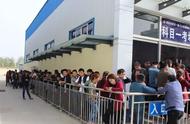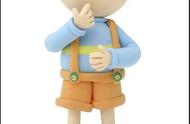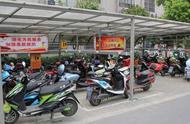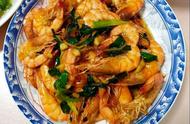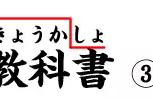townhouse n.排房
farmhouse n.农场住宅
country n.农村,国家 ['kʌntri]
apartment n.(美)公寓套房 [əˈpɑːtmənt]
rent v.租借;出租 [rent]
quiet adj.安静的 ['kwaɪət]
month n.月,月份 [mʌnθ]
for rent 出租
neighbor n.邻居 [ˈneɪbə]
store n.(大型)百货商店 [stɔː]
bank n.银行;岸 [bæŋk]
street n.街道 [striːt]
corner n.(街道)拐角;角 ['kɔːnə]
post n.邮件;邮政v.邮寄 [pəʊst]
post office n. 邮局
bookstore n.(美)书店
[ˈbʊkstɔː] parking lot 停车场
supermarket n.超市['sjuːpəˌmɑːkɪt]
railway n.铁路 ['reɪlweɪ]
station n.车站 :['steɪʃən]
end n.尽头;结尾v.结束 [end]
road n.路,道路,公路 [rəʊd]
such as 例如
community n.社区
child (pl.children) n.儿童,小孩 [tʃaɪld]
a lot of 许多,大量(=lots of)
sport n.体育运动 [spɔːt]
close adj.接近;亲密的v.关,关闭
[kləʊz] close to 靠近
far adj.远的adv.远 [fɑː] far from 远离
service n.服务 [ˈsɜːvɪs]
area n.地区;面积 [ˈeərɪə]
colorful adj.五彩缤纷的 ['kʌləfəl]
sleep v.&n.睡觉 [sliːp]
move v.搬(家);移动 [muːv]
countryside n.乡村,农村 ['kʌntrɪ'saɪd]
city n.城市 ['sɪti]
noisy adj.吵闹的 ['nɔɪzi]
traffic n.交通['træfɪk]
cost n.费用,花费v.需付费 [kɒst]
miss v.思念;错过[mɪs]
air n.空气;空中[eə]
fresh adj.新鲜的[freʃ]
Unit6 Topic2知识梳理
重点短语:
1. live with sb. 和某人居住在一起
2. in the country 在农村
3. look for 寻找
4. for rent 出租
5.excuse me
打扰了,打扰一下,劳驾,请原谅
6. on the street corner
在街道拐角处
7. train stationn 火车站
8. park cars 停车
9. keep money 存钱
10. right now 立刻,马上
11. from... to... 从……到……
12. take trains 乘火车
13. see a doctor 看医生
14. mail letter 邮寄信
15. at the end of ...在……的尽头
16. on the right 在右边
17. lot of = lots of 许多
18. close to 距离……近,紧挨着的
19. far from距离……远
20. kitchen fan 厨房排气扇
21. get sb. to do sth.派人去做某事
22. a ticket for speeding 超速罚单
23. go across穿过
24. turn left/right向左转/向右转
25. on the corner of 在…转角/拐弯处
26. across from 在…对面
27. between……and 在…之间
28. take the No. 718 bus 乘坐718路公共汽车
重点句型:
1.--What’s your home like?
你的家是什么样的?
--It’s an apartment building.
它是一栋公寓楼。
2. They live in a big farmhouse in the country.
他们住在农村的农舍里。
3. What’s the matter?
怎么了?
4. I can’t hear you, the line is bad.
我听不清,线路不好。
5. I’ll get someone to check it right now.
我马上派人去检查。
6. There is something wrong with my kitchen fan.
我厨房的风扇出了点问题。
7. There are many houses with big yards in the suburbs.
郊区有许多带着大院子的房子。
8. What kind of home do you live in?
你住在什么样的房子里?
9. --I ‘m afraid it’s too loud.
恐怕声音有点大
--I’ m really sorry about that.
我真的对此很抱歉.
重点语法:
There be 句型
“there be”句型速记
一、速记口诀
there be句型有特点,主语放在 be 后面;
单数主语用 is,复数用 are记心间①;
多个主语并列时,就近原则是关键②。
变否定,很简单,be 后要把not 添;
疑问句也不难,把 be 提到there 前③。
肯定句中用 some,否定、疑问any换④。
二、口诀解读
①There be句型的基本结构为“There be+主语(某人或某物)+地点(副词或介词短语)”,表示“某地存在某人(或某物)”,因此也叫“存在句”。当主语是不可数名词或单数名词时,be用is;当主语是复数时,be用are。
There is a ruler on the desk.书桌上有一把尺。
There are four apples on the tree.
(长在树上)树上有四个苹果。
②当主语是两个或两个以上的名词时,谓语动词的数要与离它最近的名词的数一致,即采用“临近原则”。
There is an orange and some bananas in the basket.
=There are some bananas and an orange in the basket.
篮子里有一个橘子和一些香蕉。
③其否定句是在be后加n ot。一般疑问句是将be提到句首,句末变问号。
肯定回答用:Yes, there is/are.;
否定回答用No, there isn’t/aren’t.
e.g. There are some pictures on the wall.
→There aren’t anypictures on the wall.
→Are there any pictures on the wall?
There is a bike behind the tree.
→There isn’t a bikebehind the tree.
→Is there a bike behind the tree?
④在肯定句中常用some,但在变为否定句或疑问句时,要把some改为any。
There are some fish in the water.
→Are there any fish in the water?
三、特别提醒
1. “What’s 表地点的介词短语”用there be句型来回答。在问的时候,be用is,而回答时,要视实际情况而选用is或are。
—What’s on thedesk? 桌子上有什么?
—There are 5 eggs. 有5个鸡蛋。
2. 有时为了突出或强调地点状语,也可把表地点的介词短语放在前面,后面加逗号。
Under the table there is a cat.在桌下有一只猫。
声明:内容来源于网络,如有侵权请联系删除!




